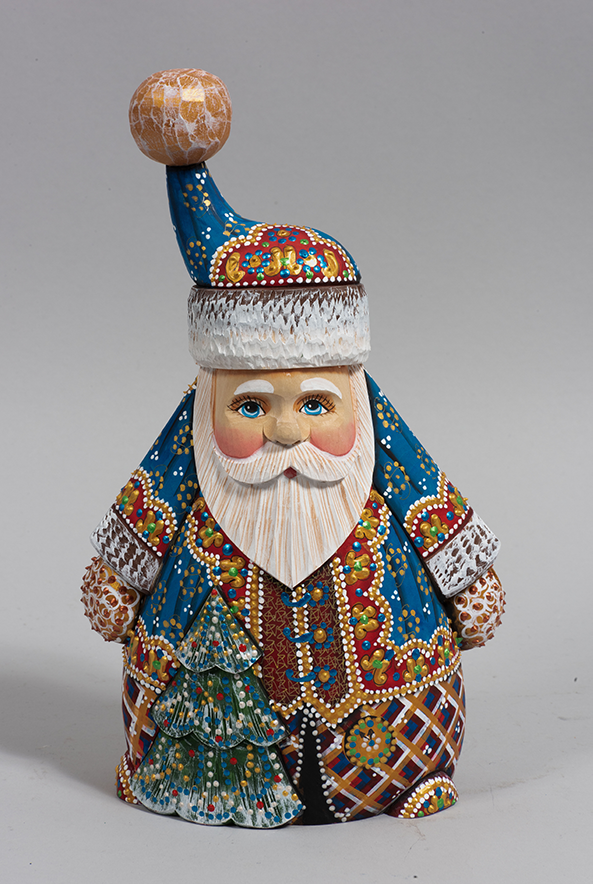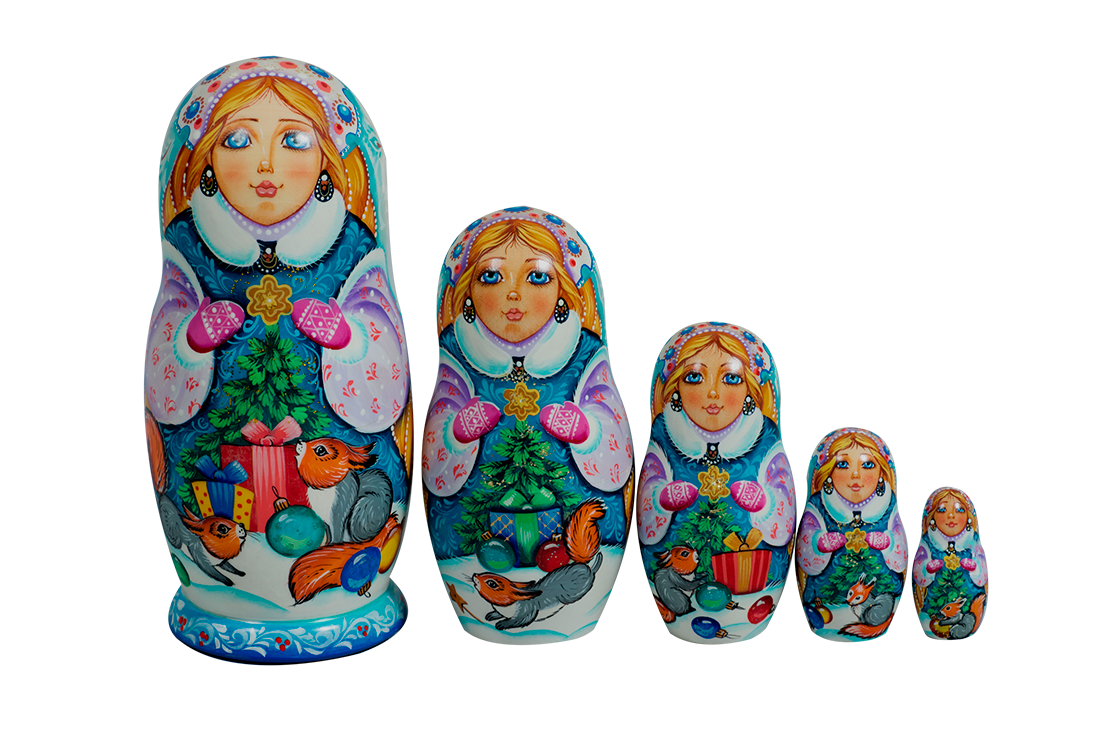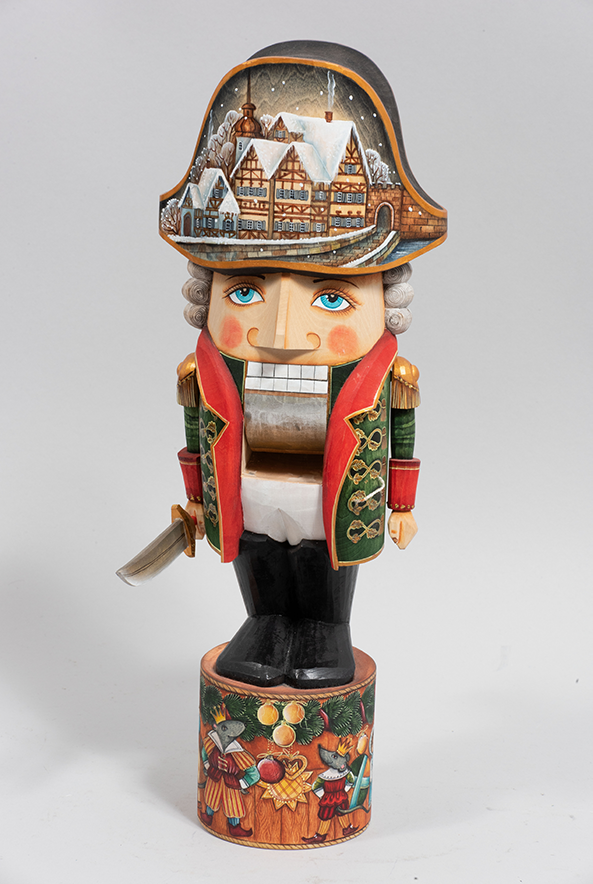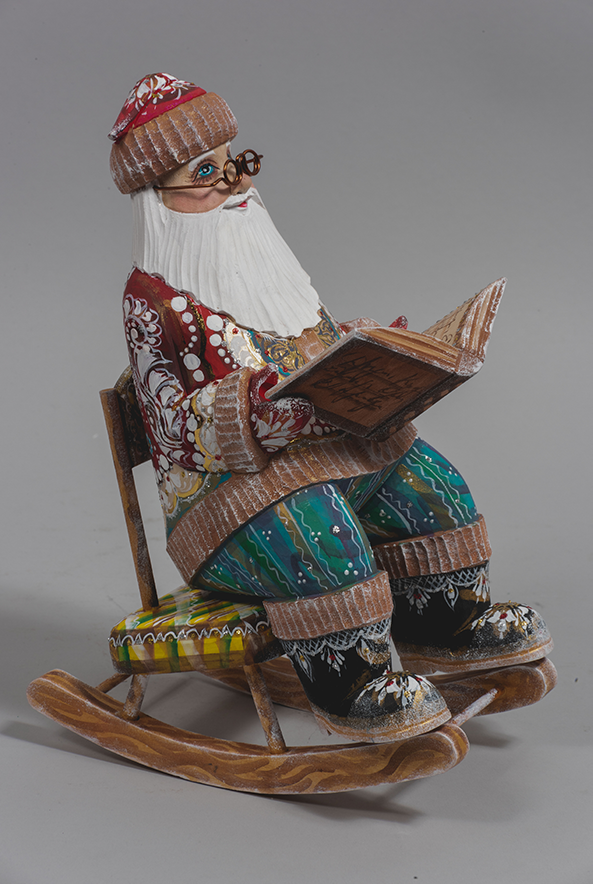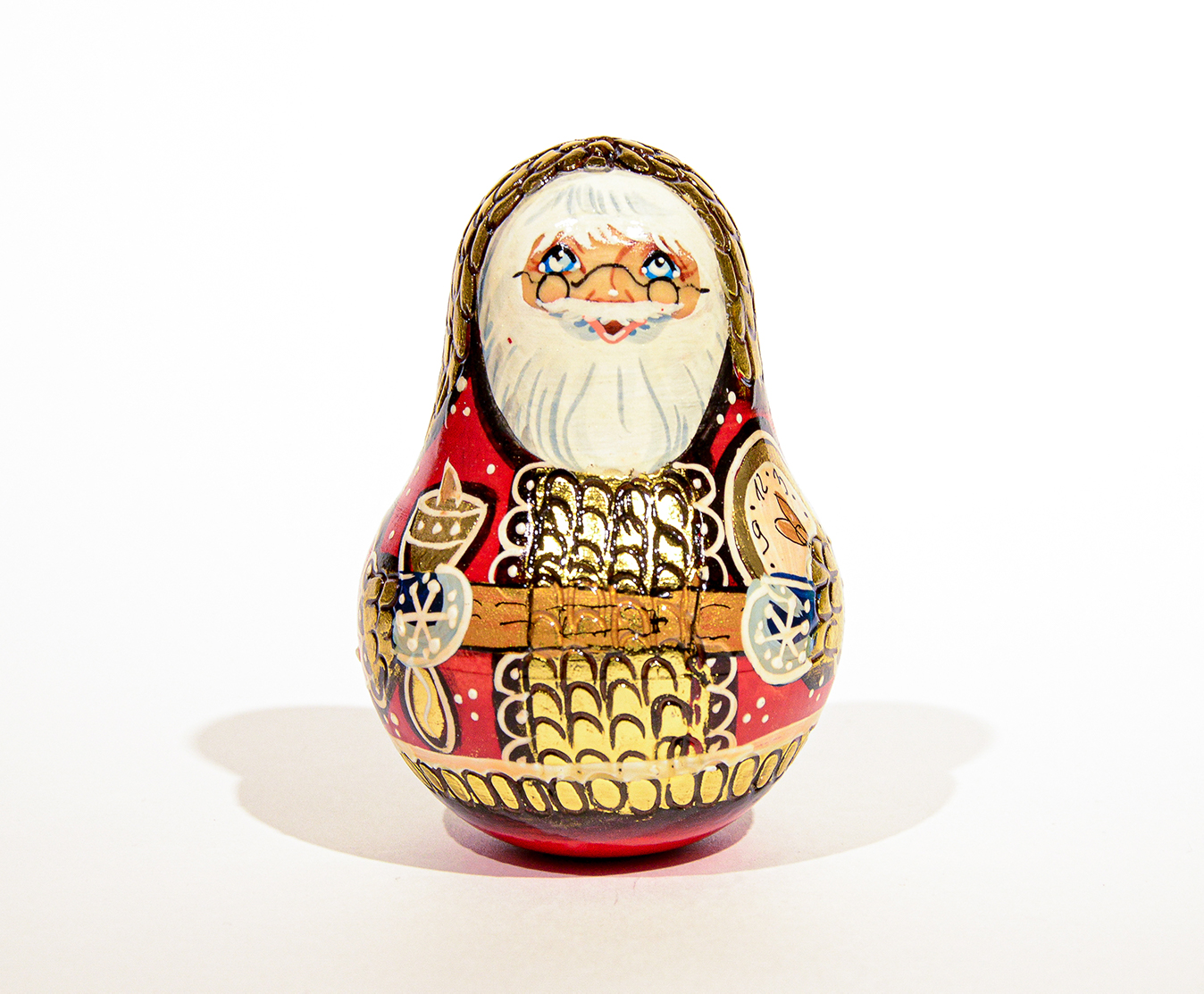
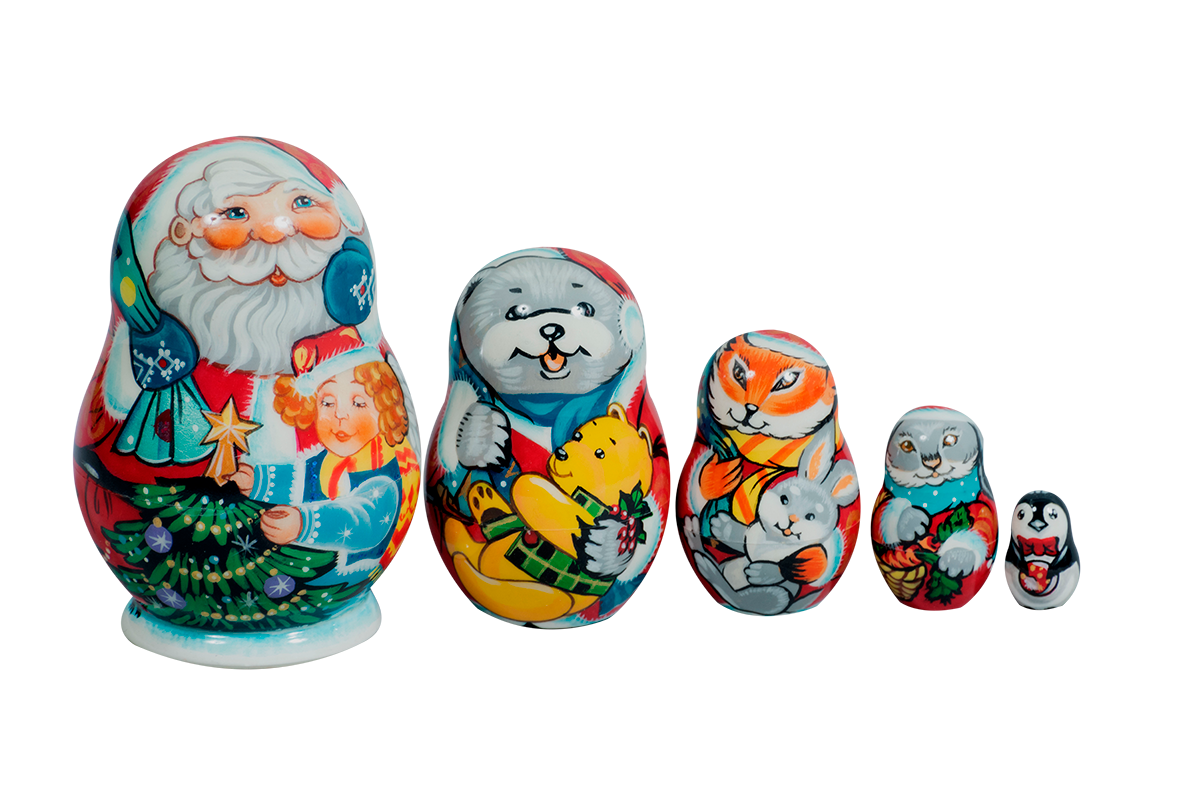
Matryoshka doll “New Year”
Museum quality fancy Matryoshka doll set of five pieces.
The first Matryoshka doll depicts Father Frost – a symbol of Russian New Year. He is recognizable by his red coat, matching hat, and huge white beard. New Year is the most important holiday in Russia, especially for children, as they are waiting for Father Frost to come with presents. Four another dolls represents funny animals, dressed in winter cloth.
The doll can be the best choice as a children’s gift as well as a perfect New Year present.
The work was made using best quality materials from linden wood to natural lacquer and paint.
The doll was created in the art studio in Hotkovo town not far from Moscow. Our gallery has been working with them for many years and can be responsible for best quality items.
Material: linden wood, acryl, tempera, lacquer.
Height: 9cm
Weight: 100gr
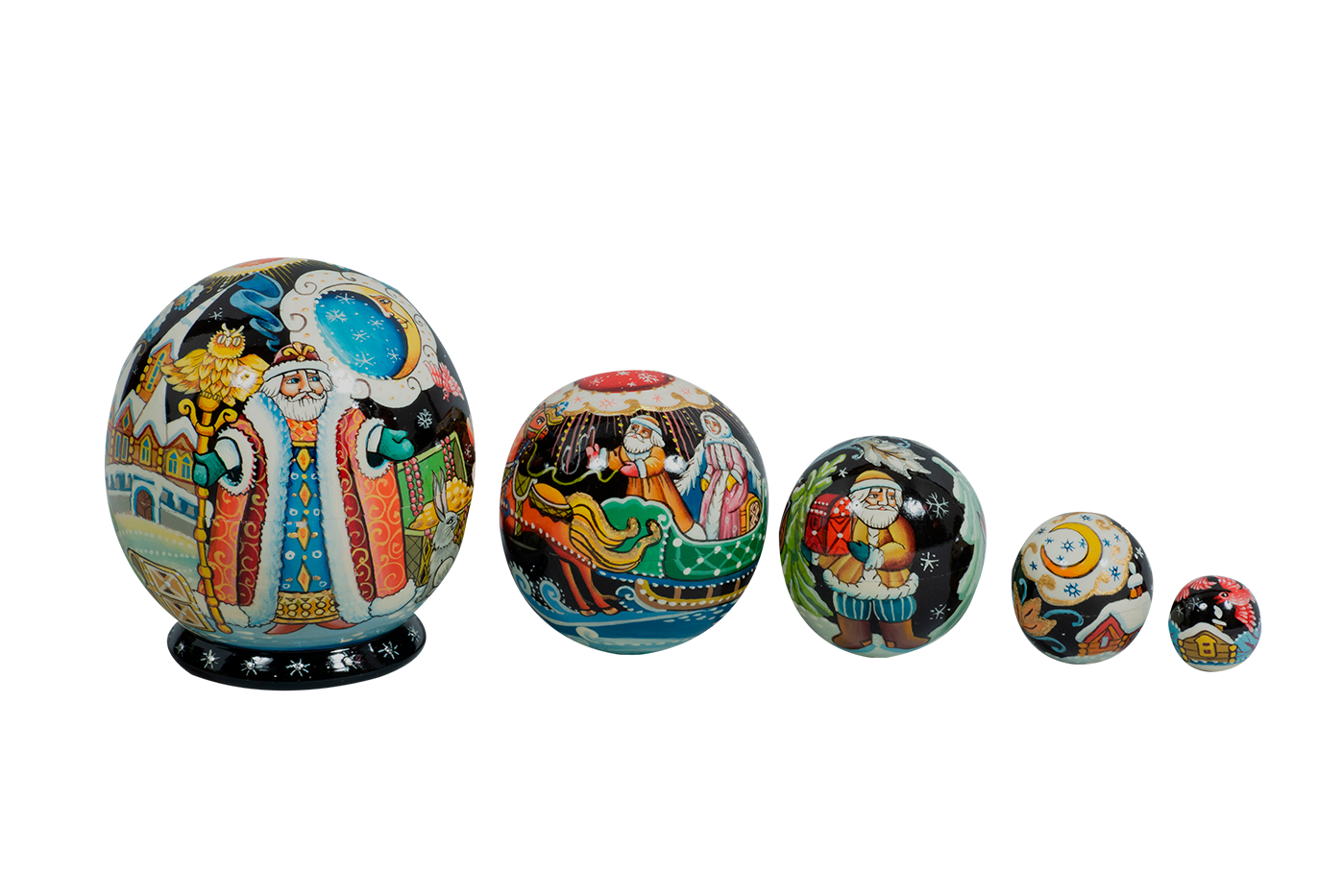
Matryoshka doll “New Year”
Unusual five pieces doll, created in the shape of a sphere. Its shape represents a design of a Christmas ball. Such kind of work is very unique and valuable, because it needs a lot of craftsmanship to create a miniature on not flat surface.
The whole item puts you in the atmosphere of the holiday! On the first one we can see Father Frost preparing his gifts for kids. New Year is the most important holiday in Russia, and father Frost or Ded Moroz is the main symbol. He is always recognizable by his beard, bright red fur coat and a bag full of presents. The second one depicts father Frost and his granddaughter Snow maiden sledging among huge Russian snowdrifts. The rest dolls show us little villages, covered with snow.
The doll is made of high-quality linden wood, which keeps its shape. It is hand painted using tempera and acrylic paints, and then covered with shiny lacquer.
The doll can be a nice decoration for Christmas and also will perfectly fit any interior.
The doll was created in a young famous workshop “Firebird”, which is remarkable for its bright detailed art works and unique modern designs.
Material: linden wood, acrylic paint, lacquer.
Weight: 100gr
Height: 9cm
Total:
Checkout $490.00

